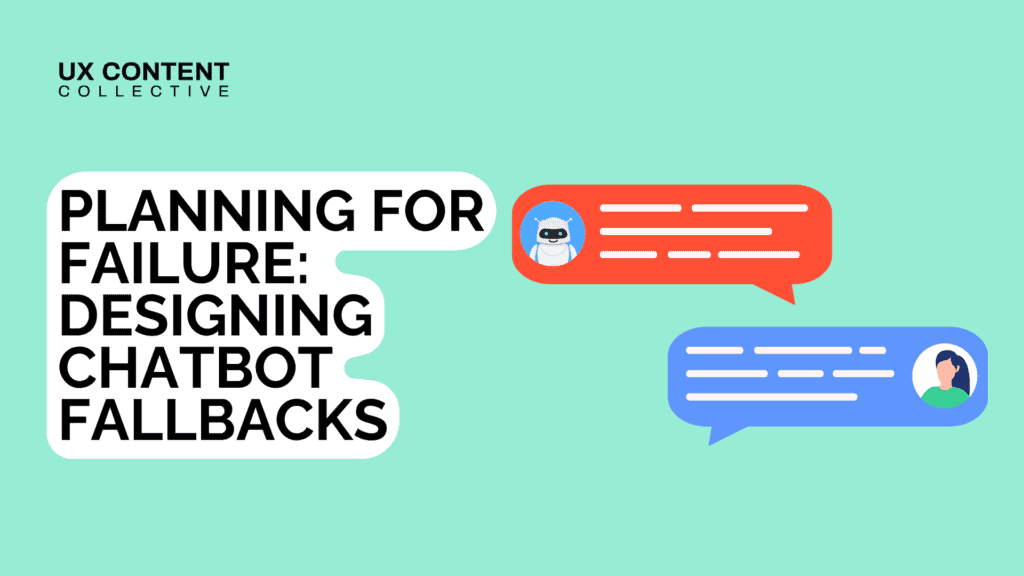
Course excerpt: How to prioritize product content initiatives

Patrick Stafford

Ready to advance your UX content skills?
Take the next step for content designers and UX writers: enroll in Advanced UX Content for Product.

The following is an excerpt from our course, Advanced UX Content for Product. This excerpt is taken from the lesson “Planning and prioritization across product systems.”
Many content problems are ambiguous and their value needs to be proven out. But what about when there is no ambiguity? What about those times when you’re absolutely sure that something needs to be done, and you know exactly how to do it?
You probably have a really good sense of best practices and how things should be organized, such as more efficient ways to organize text, structuring content, or auditing an entire product for consistent content.
The issue is that content designers often find themselves in situations where they know what needs to be done, but they struggle with explaining why and making a case for it. Often that’s because they don’t know how to connect what they want to what the business system cares about.
They also struggle to convince others that these types of projects need to be done outside of a quarter-by-quarter business schedule. So far we’ve really talked about short-term priorities, but now we want to talk about long-term structural work that sets you up for the future.
Defining value: What does “impact” mean in your context?
When you’re trying to get structural content work prioritized (think things like centralizing strings, refactoring fallback logic, or building a framework for AI evaluation) it’s not enough to say, “This is good practice.” That might be true. But it won’t get you time, resources, or support unless you can actually explain why in quantifiable terms.
To get traction, you have to translate your content priorities into the language your organization already uses to define success. And that’s where a lot of strategic initiatives stall. Not because the work is unclear, but because the impact isn’t legible to the people who decide what gets done.
In high-functioning product orgs, most decisions like what to build, when to invest, where to assign people, are tied to some definition of impact. It might be formal: a quarterly OKR, an executive goal, a roadmap commitment. Or it might be informal: a known tech debt issue, a growth experiment, a customer pain point that keeps surfacing.
In one company, success might mean shipping faster. In another, it might mean reducing support load, improving accessibility compliance, or accelerating localization. And if you try to frame your work in terms of clarity, consistency, or voice polish? It’ll sound like a nice-to-have unless it’s directly tied to one of those definitions.
Think back to the first lesson. What does your organization value? You can usually figure this out pretty quickly in a few ways:
- Your company tells you. Many companies spend time talking to their employees about what the quarterly and yearly roadmap looks like, with everyone’s OKRs neatly planned out.
- Public-facing documents. If your company is public then it’s well worth finding the financial report or shareholder presentation and seeing what the company cares about. The more you can connect the work you’re doing to that communication, the more buy-in you’ll probably get.
- Asking questions. It’s amazing how much information you can get by just going to your manager or colleagues and asking:
- What are our top goals this quarter?
- What does leadership care about right now?
- What’s putting the most pressure on our team?
- What’s causing friction for engineering, support, or marketing?
- Where are we duplicating effort or shipping inconsistencies?
Once you start listening for patterns, a few common themes will emerge. These are the operational currencies your org trades in. For example:
| Value Signal | Translation |
|---|---|
| Speed | Will this help us ship faster, with fewer bugs? |
| Scale | Will this reduce rework or improve reuse? |
| Risk | Will this help us avoid confusion, complaints, or legal issues? |
| Support | Will this reduce tickets or customer pain? |
| Engagement | Will this help more users activate, convert, or stay? |
Now, instead of saying:
“I want to build a content schema to organize system messages.”
You’re saying:
“We’re duplicating work across four flows right now. This schema could cut that in half and reduce translation speed by 20%.”
Choosing leverage over perfection
It’s tempting to go big. To fix everything. To redesign the message hierarchy, write a tone system, build a schema, and overhaul naming conventions all at once. Because you know it would help. And you can already see how it would all connect. But trying to fix everything at once risks stalling the entire effort.
Big asks raise big questions:
- Who needs to approve this?
- Is it scoped?
- Will it delay other work?
- Do we have capacity to maintain it?
If you haven’t built trust yet, or if your org is under pressure, those questions become blockers. Even good ideas get sidelined. That’s why strategic content leaders don’t optimize for perfection, they optimize for leverage.
What leverage looks like in practice
Let’s say you’ve noticed that confirmation messages are inconsistent across flows. Some use “Done,” some use “Success,” some explain next steps, some don’t. There’s no shared structure or pattern.
You could suggest a full audit and rewrite. Create a naming system, tone framework, content model. Test and deploy across all flows. That’s a perfection play. And it might work if the organization has appetite, capacity, and clear ownership. But let’s say they don’t.
Instead, you pick one flow: onboarding. You align the success messages to a reusable pattern. You test it with localization and support. You show how it reduced edge cases, improved reuse, and eliminated delays in review. Then you share that example with two other teams. And suddenly, they ask if they can adopt the same model.
When in doubt, reduce the ask
Think of leverage as a way to lower the resistance threshold.
Not:
“Let’s refactor all error messages across the product.”
But:
“Let’s try this new error message structure in just one flow and see if it reduces confusion.”
Not:
“Let’s move all our strings to a central repo.”
But:
“Can we pilot central string management for this new feature? I’ll own the documentation.”
| Approach | Perfection | Leverage |
|---|---|---|
| Goal | Clean everything up | Improve the most impactful part |
| Strategy | System-wide refactor | Targeted intervention in a key flow |
| Effort | High complexity, high coordination | Low complexity, fast feedback loop |
| Outcome | Elegant system, high adoption risk | Practical win, compounding credibility |
Scoping: How to make a system-level idea actionable
When content work touches systems it can quickly start to feel too big to take on. You might hear: “This is great, but we don’t have time right now.” Or: “Can we circle back next quarter?” Sometimes, you’ll even convince yourself it’s too much and quietly move it to the backlog.
This is where scoping matters. Good scoping turns a strategic insight into a practical plan. It makes your idea easier to say yes to.
Let’s say your idea is simple: We need to standardize how success messages are written and structured across the product.
That’s true. But it’s also vague, and frankly overwhelming. It’s not clear where to start, how long it would take, or who it affects. So instead, you scope it like this:
“I want to pilot a naming pattern and fallback structure for success messages in onboarding. We’ll document five messages, apply them to two flows, and share the results with product and localization. If the model holds up, we’ll propose expanding it to additional features.”
Here are a few patterns that work:
- Pilot one flow. Pick a feature with active development. Apply your idea there first.
- Target one pain point. Focus on a single issue that’s affecting velocity, consistency, or user clarity.
- Propose one constraint. Instead of a full rewrite, propose a new pattern: “All error messages follow this structure going forward.”
- Write a two-sentence plan. If you can’t explain it in two sentences, it’s not scoped tightly enough yet.
Scoping is where strategy meets reality. It’s how you move from “we should…” to “we’re doing…” It also sends a message to your cross-functional partners: this isn’t just a critique. It’s a contribution.
Sequencing: What to tackle first, and why
Once you’ve scoped your idea, the next question is: where do you start? Even a well-scoped initiative can stall if you pick the wrong entry point. Try to take on too much, and you’ll run into resistance. Start somewhere invisible, and no one notices the impact. Sequence poorly, and you end up solving the wrong problem first or solving the right problem too late.
Say you’ve scoped an initiative to improve error messages. You’ve identified five flows where messaging is inconsistent or confusing. You’re ready to act. Here’s how to think about it:
Where’s the user visibility highest? Which flow do most users see? Where is messaging most noticeable or high-impact? Improving it there means more people benefit, and more stakeholders pay attention.
What maps to current business goals? Is one of these flows tied to a launch, experiment, or executive priority this quarter? Aligning with what matters now can get you faster approvals and support.
Where is engineering already active? If one of the flows is in active development, that’s your chance. It’s easier to slot content improvements into existing engineering cycles than to create net-new work.
Where are localization or support teams struggling? Look for pain points downstream. Maybe one flow generates translation inconsistencies. Maybe another is responsible for a high number of support tickets. Start there, and solve for multiple teams at once.
What’s the easiest win? Don’t underestimate this one. If one flow is relatively self-contained, easy to refactor, or has an enthusiastic stakeholder, use it to build momentum. Prove your idea works, then scale it.
You don’t need to answer all five questions perfectly. One or two is usually enough to find your entry point. The goal here isn’t to create a perfectly linear plan, it’s to sequence your effort in a way that builds credibility and energy instead of stalling under the weight of complexity.
Actions for this lesson:
- Choose one high-friction content issue and map its impact. Who is affected? What’s delayed, broken, or inconsistent? What could be improved with a small change?
- Write a scoped plan for a system fix. Choose one flow or repo. Identify a naming, fallback, or structure issue. Write a two-sentence plan to fix it and measure the result.
- Pitch a system improvement to one stakeholder. Frame it in terms of business goals or time saved. Ask for feedback and adjust based on what resonates.
- Create a sequencing rubric. For your next project, define how you’ll prioritize work. Include user visibility, risk, business value, and feasibility.
Interested in learning more? Check out Advanced UX Content for Product.



